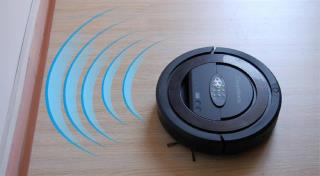Как да инсталирате Thelia 2.3 на Debian 9
Използване на различна система? Thelia е инструмент с отворен код за създаване на уебсайтове за е-бизнес и управление на онлайн съдържание, написано на PHP. Изходен код на Thelia i
TextPattern CMS 4.6.2 is a simple, flexible, free and open source Content Management System (CMS) that allows web designers to design beautiful web sites without programming in PHP. TextPattern CMS features an easy to learn XML-like tag-based templating language which allows web designers to quickly structure and build fast, lean, responsive,and secure CMS-based web sites and blogs.
In this tutorial we are going to install TextPattern CMS 4.6.2 on a Debian 9 LAMP VPS using Apache web server, PHP 7.1, and a MariaDB database.
We will start by adding a new sudo user.
First, log into your server as root:
ssh root@YOUR_VULTR_IP_ADDRESS
The sudo command isn't installed by default in the Vultr Debian 9 server instance, so we will first install sudo:
apt-get -y install sudo
Now add a new user called user1 (or your preferred username):
adduser user1
When prompted, enter a secure and memorable password. You will also be prompted for your "Full Name" and some other details, but you can simply leave them blank by pressing Enter.
Now check the /etc/sudoers file to make sure that the sudoers group is enabled:
visudo
Look for a section like this:
%sudo ALL=(ALL:ALL) ALL
This line tells us that users who are members of the sudo group can use the sudo command to gain root privileges. It should be uncommented by default so you can simply exit the file.
Next we need to add user1 to the sudo group:
usermod -aG sudo user1
We can verify the user1 group membership and check that the usermod command worked with the groups command:
groups user1
Now use the su command to switch to the new sudo user user1 account:
su - user1
The command prompt will update to indicate that you are now logged into the user1 account. You can verify this with the whoami command:
whoami
Restart the sshd service so that you can login via ssh with the new non-root sudo user account you have just created:
sudo systemctl restart sshd
Exit the user1 account:
exit
Exit the root account (which will disconnect your ssh session).
exit
You can now ssh into the server instance from your local host using the new non-root sudo user user1 account:
ssh user1@YOUR_VULTR_IP_ADDRESS
If you want to execute sudo without having to type a password every time, then open the /etc/sudoers file again, using visudo:
sudo visudo
Edit the section for the sudo group so that it looks like this:
%sudo ALL=(ALL) NOPASSWD: ALL
Please note: Disabling the password requirement for the sudo user is not a recommended practice, but it is included here as it can make server configuration much more convenient and less frustrating, especially during longer systems administration sessions! If you are concerned about the security implications, you can always revert the configuration change to the original after you finish your administration tasks.
Whenever you want to log into the root user account from within the sudo user account, you can use one of the following commands:
sudo -i
sudo su -
You can exit the root account and return back to your sudo user account any time by simply typing:
exit
Before installing any packages on the Debian server instance, we will first update the system.
Make sure you are logged into the server using a non-root sudo user and run the following commands:
sudo apt-get update
sudo apt-get -y upgrade
Install the Apache web server with:
sudo apt-get -y install apache2
Then use the systemctl command to start and enable Apache to execute automatically at boot time.
sudo systemctl enable apache2
sudo systemctl start apache2
Check your Apache default site configuration file to ensure that the DocumentRoot directive points to the correct directory.
sudo vi /etc/apache2/sites-enabled/000-default.conf
The DocumentRoot configuration option should look like this:
DocumentRoot "/var/www/html"
We now need to enable the mod_rewrite Apache module, so ensure that your Apache default site configuration file is still open, and add the following Directory Apache directives just before the closing </VirtualHost> tag, so that the end of your configuration file looks like this:
<Directory /var/www/html/>
Options Indexes FollowSymLinks MultiViews
AllowOverride All
Order allow,deny
allow from all
</Directory>
</VirtualHost>
The most important directive shown above is AllowOverride All.
Now save and exit the file, and enable the mod_rewrite Apache module:
sudo a2enmod rewrite
We will restart Apache at the end of this tutorial, but restarting Apache regularly during installation and configuration is certainly a good habit, so let's do it now.
sudo systemctl restart apache2
We can now install PHP 7.0 along with all of the necessary PHP modules required by TextPattern CMS.
sudo apt-get -y install php php-gd php-mbstring php-common php-mysql php-imagick php-xml libapache2-mod-php php-curl
Debian 9 defaults to using MariaDB database server, which is an enhanced, fully open source, drop-in replacement for MySQL server.
Install MariaDB database server with:
sudo apt-get -y install mariadb-server
Start and enable MariaDB server to execute automatically at boot time.
sudo systemctl enable mariadb
sudo systemctl start mariadb
Secure your MariaDB server installation:
sudo mysql_secure_installation
The root password will probably be blank, so simply press "enter" when prompted for the root password.
When prompted to create a MariaDB/MySQL root user, select "Y" (for yes) and then enter a secure root password. Simply answer "Y" to all of the other yes/no questions as the default suggestions are the most secure options.
Log into the MariaDB shell as the MariaDB root user by running the following command.
sudo mariadb -u root -p
To access the MariaDB command prompt, simply enter the MariaDB root password when prompted.
Run the following queries to create a MariaDB database and database user for TextPattern CMS.
CREATE DATABASE textpattern_db CHARACTER SET utf8 COLLATE utf8_general_ci;
CREATE USER 'textpattern_user'@'localhost' IDENTIFIED BY 'UltraSecurePassword';
GRANT ALL PRIVILEGES ON textpattern_db.* TO 'textpattern_user'@'localhost';
FLUSH PRIVILEGES;
EXIT;
You can replace the database name textpattern_db and username textpattern_user with something more to your liking, if you prefer. Also, make sure that you replace "UltraSecurePassword" with an actually secure password.
Change your current working directory to the default web directory.
cd /var/www/html/
If you get an error message saying something like 'No such file or directory' then try the following command:
cd /var/www/ ; sudo mkdir html ; cd html
Your current working directory should now be: /var/www/html/. You can check this with the pwd (print working directory) command:
pwd
Now use wget to download the TextPattern CMS installation package.
sudo wget https://textpattern.com/file_download/75/textpattern-4.6.2.zip
Please note: The above TextPattern CMS package URL was correct at the time of writing, but you should definitely check for the most recent version by visiting the TextPattern CMS download page.
List the current directory to check that you have successfully downloaded the file.
ls -la
Let's quickly install unzip so we can unzip the file.
sudo apt-get -y install unzip
Now uncompress the zip archive.
sudo unzip textpattern-4.6.2.zip
Move all of the installation files to the web root directory:
sudo mv textpattern-4.6.2/* /var/www/html
Change ownership of the web files to avoid any permissions problems.
sudo chown -R www-data:www-data *
Restart Apache again.
sudo systemctl restart apache2
Now we're ready to move on to the final step.
It's time to visit the IP address of your server instance in your browser, or, if you've already configured your Vultr DNS settings (and given it enough time to propagate) you can simply visit your domain instead.
To access the TextPattern CMS installation page, enter your Vultr instance IP address into your browser address bar, followed by /textpattern/setup/:
http://YOUR_VULTR_IP_ADDRESS/textpattern/setup/
Most of the installation options are self explanatory, but here are a few pointers to help you along:
Select your language and click on the Submit button.
Enter the database details we've created earlier:
MySQL user name: textpattern_user
MySQL password: UltraSecurePassword
MySQL server: localhost
MySQL database: textpattern_db
Enter your site domain if it is configured, otherwise simply enter your IP address instead and click the Next button.
Site URL: YOUR_VULTR_IP_ADDRESS
You will see a page confirming that your database connection is connected. If you see an error message instead, go back to step 2 and check your database settings.
Now go back to your server instance terminal and create a config.php file in the /textpattern/ directory.
sudo vi textpattern/config.php
Copy the text on the installation page into the config.php file and then save and exit the file. The contents of the configuration file will look something like this:
<?php
$txpcfg['db'] = 'textpattern_db';
$txpcfg['user'] = 'textpattern_user';
$txpcfg['pass'] = 'UltraSecurePassword';
$txpcfg['host'] = 'localhost';
$txpcfg['table_prefix'] = '';
$txpcfg['txpath'] = '/var/www/html/textpattern';
$txpcfg['dbcharset'] = 'utf8mb4';
?>
Next, return to the installation page in your browser and click the I did it! button.
Now enter your login details as follows:
Your full name: <your full name>
Your email address: <your email address>
Choose a login name: <a memorable login name>
Choose a password: <a secure password>
Then select an Admin site theme or simply leave the default theme selected.
Click the Next button to finalize the installation.
If everything went smoothly, you will see a confirmation page that says That went well!.
For security purposes, you should return to the terminal and delete the /setup/ directory from the /textpattern/ directory:
sudo rm -rf ./textpattern/setup/
To access the admin site simply click on the "Log in now" button and enter your username and password. If you aren't redirected to the admin login page, you can enter the address manually:
http://YOUR_VULTR_IP_ADDRESS/textpattern/index.php
You are now ready to start adding your content and configuring the look and feel of your site! Make sure you check out the excellent TextPattern CMS documentation for more information about how to build and configure your site.
I hope you enjoyed this tutorial, and best of luck building your new TextPattern CMS based web site!
Използване на различна система? Thelia е инструмент с отворен код за създаване на уебсайтове за е-бизнес и управление на онлайн съдържание, написано на PHP. Изходен код на Thelia i
Използване на различна система? Microweber е CMS и онлайн магазин с отворен код за плъзгане и пускане. Изходният код на Microweber се хоства на GitHub. Това ръководство ще ви покаже
Използване на различна система? Microweber е CMS и онлайн магазин с отворен код за плъзгане и пускане. Изходният код на Microweber се хоства на GitHub. Това ръководство ще ви покаже
Използване на различна система? DotCMS е система за управление на съдържанието от корпоративен клас с отворен код, написана на Java. Той съдържа почти всички необходими функции
Използване на различна система? Pagekit 1.0 CMS е красива, модулна, разширяема и лека, безплатна система за управление на съдържанието (CMS) с отворен код с
Използване на различна система? BigTree CMS 4.2 е бърза и лека, безплатна и с отворен код, корпоративна система за управление на съдържанието (CMS) с обширна
Използване на различна система? Pagekit е CMS с отворен код, написан на PHP. Изходният код на Pagekit се хоства на GitHub. Това ръководство ще ви покаже как да инсталирате
Използване на различна система? PyroCMS е CMS с отворен код, написан на PHP. Изходният код на PyroCMS се хоства на GitHub. В това ръководство добре се разходете из целия
Използване на различна система? Subrion 4.1 CMS е мощна и гъвкава система за управление на съдържанието (CMS) с отворен код, която носи интуитивно и ясно съдържание
Използване на различна система? Backdrop CMS 1.8.0 е проста и гъвкава, удобна за мобилни устройства, безплатна система за управление на съдържанието (CMS) с отворен код, която ни позволява
Използване на различна система? Въведение Roadiz е модерна CMS, предназначена да обработва много видове услуги. Въз основа на компонентите на Symfony и Doctrine ORM, т.е
Използване на различна система? Microweber е CMS и онлайн магазин с отворен код за плъзгане и пускане. Изходният код на Microweber се хоства на GitHub. Това ръководство ще ви покаже
Използване на различна система? Grav е CMS с плосък файл с отворен код, написан на PHP. Изходният код на Grav се хоства публично на GitHub. Това ръководство ще ви покаже как т
Използване на различна система? Grav е CMS с плосък файл с отворен код, написан на PHP. Изходният код на Grav се хоства публично на GitHub. Това ръководство ще ви покаже как т
Използване на различна система? Automad е файлова система за управление на съдържанието (CMS) с отворен код и шаблонна машина, написана на PHP. Изходният код на Automad i
Raneto е безплатна база от знания с отворен код, изградена на Node.js, която е лесна за настройка и използване, както и лесна за администриране. Категории и страници ar
Използване на различна система? Thelia е инструмент с отворен код за създаване на уебсайтове за е-бизнес и управление на онлайн съдържание, написано на PHP. Изходен код на Thelia i
Използване на различна система? Октомври 1.0 CMS е проста и надеждна, безплатна и отворена система за управление на съдържанието (CMS), изградена върху рамката Laravel
Използване на различна система? ImpressPages CMS 5.0 е проста и ефективна, безплатна и с отворен код, лесна за потребителя, базирана на MVC, система за управление на съдържанието (CMS)
Using a Different System? CMS Made Simple 2.2 is a flexible and extensible, free and open source Content Management System (CMS) intelligently designed to b
Изкуственият интелект не е в бъдещето, тук е точно в настоящето. В този блог Прочетете как приложенията за изкуствен интелект са повлияли на различни сектори.
Вие също сте жертва на DDOS атаки и сте объркани относно методите за превенция? Прочетете тази статия, за да разрешите вашите запитвания.
Може би сте чували, че хакерите печелят много пари, но чудили ли сте се някога как печелят такива пари? нека обсъдим.
Искате ли да видите революционни изобретения на Google и как тези изобретения промениха живота на всяко човешко същество днес? След това прочетете в блога, за да видите изобретенията на Google.
Концепцията за самоуправляващи се автомобили да тръгват по пътищата с помощта на изкуствен интелект е мечта, която имаме от известно време. Но въпреки няколкото обещания, те не се виждат никъде. Прочетете този блог, за да научите повече…
Тъй като науката се развива с бързи темпове, поемайки много от нашите усилия, рискът да се подложим на необяснима сингулярност също нараства. Прочетете какво може да означава сингулярността за нас.
Методите за съхранение на данните може да се развиват от раждането на данните. Този блог обхваща развитието на съхранението на данни на базата на инфографика.
Прочетете блога, за да разберете различни слоеве в архитектурата на големи данни и техните функционалности по най-простия начин.
В този дигитално задвижван свят устройствата за интелигентен дом се превърнаха в решаваща част от живота. Ето няколко невероятни предимства на интелигентните домашни устройства за това как те правят живота ни струващ и по-опростен.
Наскоро Apple пусна macOS Catalina 10.15.4 допълнителна актуализация за отстраняване на проблеми, но изглежда, че актуализацията причинява повече проблеми, водещи до блокиране на mac машини. Прочетете тази статия, за да научите повече



